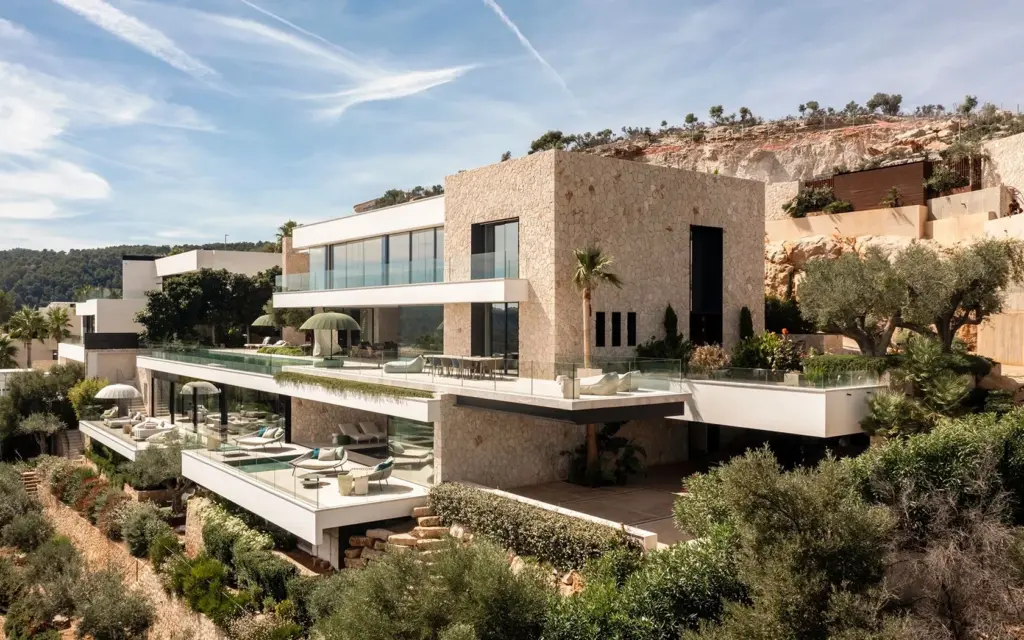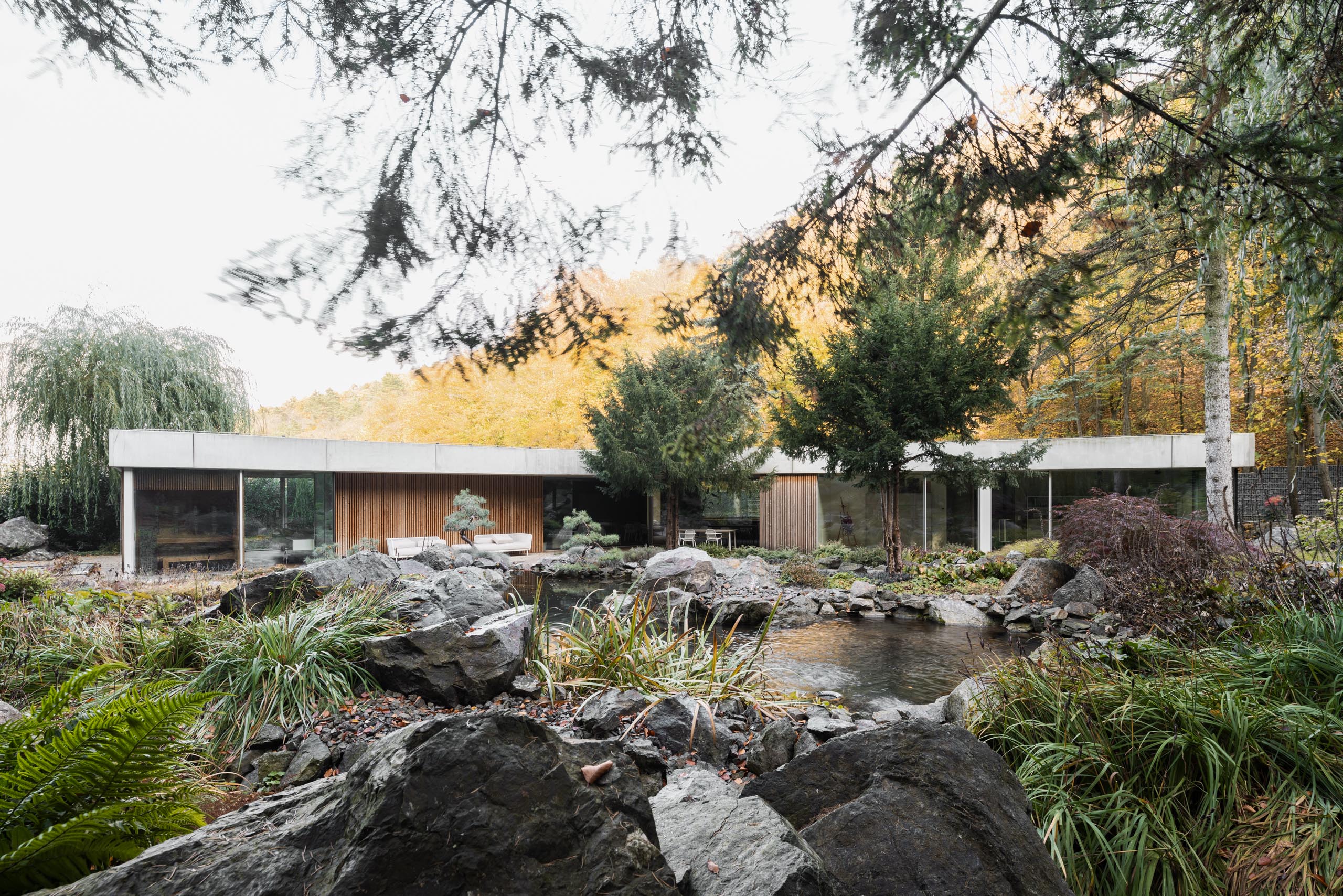Banánka House, designed by Paulíny Hovorka Architekti and located in the peaceful village of Banka, Slovakia, showcases a minimalist design that effortlessly blends with its natural surroundings. Completed in 2024, this single-story family home illustrates how architecture can create a strong connection between indoor and outdoor spaces.
© Matej Hakár
© Fernando Guerra
Design Concept: Y-Shaped Layout for Seamless Integration
The architects employed a Y-shaped floor plan, with three wings extending outward at 120-degree angles from a central living hall. This configuration divides the 2,338 m² plot into intimate garden segments, each offering unique views and privacy. The design prioritizes the preservation of existing trees and maximizes sunlight exposure in living areas, creating a serene and contemplative atmosphere.
Material Palette: Raw and Honest Elements
Banánka House utilizes a restrained material palette emphasizing durability and timelessness. The structure features monolithic concrete ceilings and walls, complemented by galvanized mesh gabions filled with crushed stone that flow from the exterior into the interior. Warmth is introduced through thermally modified pine and engineered oak wood elements, balancing the concrete’s rawness and adding tactile comfort.
Read more- Miramar Tower: Contemporary Living with OODA
© Matej Hakár
Perhaps his most famous principle, “Less is more,” summarizes Mies’ approach to design: stripping away the unnecessary to reveal the essential. His buildings are characterized by clean lines, open floor plans, and an absence of ornamentation. This philosophy encourages architects to prioritize spatial clarity and material integrity, resulting in modern and enduring structures.

© Tomeu Canyellas
1. Heydar Aliyev Center – Zaha Hadid
1. Heydar Aliyev Center – Zaha Hadid
Indoor-Outdoor Connection: Expansive Glass Walls
Large sliding glass walls line extensive parts of the house, enabling a seamless connection between the interior and the garden. During warmer months, these walls can be fully retracted, merging the living area with the covered terrace and the peaceful garden area, which features a pond. This design choice blurs the lines between the built environment and nature, enriching the living experience.
Functional Zoning: Privacy and Comfort
The layout thoughtfully separates public and private spaces. The central living hall serves as the heart of the home, combining the kitchen, dining area, and living room. One wing houses children’s or guest bedrooms, a shared bathroom, and a meditation room. The other wing accommodates the main suite, featuring a walk-in closet, a spacious bathroom, a sauna, and a terrace with a hot tub and a plunge pool supplied by a nearby stream.
© Matej Hakár
Banánka House by Paulíny Hovorka Architekti demonstrates how minimalism can create a peaceful living space that stays closely connected to its natural surroundings. With careful planning, a simple material palette, and a focus on blending indoor and outdoor spaces, the architects have designed a retreat that provides privacy and a strong bond with nature.
See the full gallery here.
